Abstract
OBJECTIVES. This work was undertaken to determine whether there are any chronic neurological sequelae to acute organophosphate pesticide poisoning. METHODS. California surveillance data were used in a study of neurological function among 128 men poisoned by organophosphate pesticides in California from 1982 to 1990 and 90 referents. Tests included a neurological physical examination, 5 nerve conduction tests, 2 vibrotactile sensitivity tests, 10 neurobehavioral tests, and 1 postural sway test. RESULTS. After correcting for confounding, the poisoned group performed significantly worse than the referent group on two neurobehavioral tests (sustained visual attention and mood scales). When the data were restricted to men with documented cholinesterase inhibition (n = 83) or to men who had been hospitalized (n = 36), the poisoned subjects also showed significantly worse vibrotactile sensitivity of finger and toe. Significant trends of increased impairment were found with increased days of disability on a wide spectrum of tests of both central and peripheral nerve function. CONCLUSIONS. While these findings are limited by low response rates and by small sample sizes for specific pesticides, this study was based on a large surveillance database and is the largest study to date of the chronic effects of organophosphate pesticide poisoning. The evidence of some long-term effects of poisoning is consistent with two prior studies.
Full text
PDF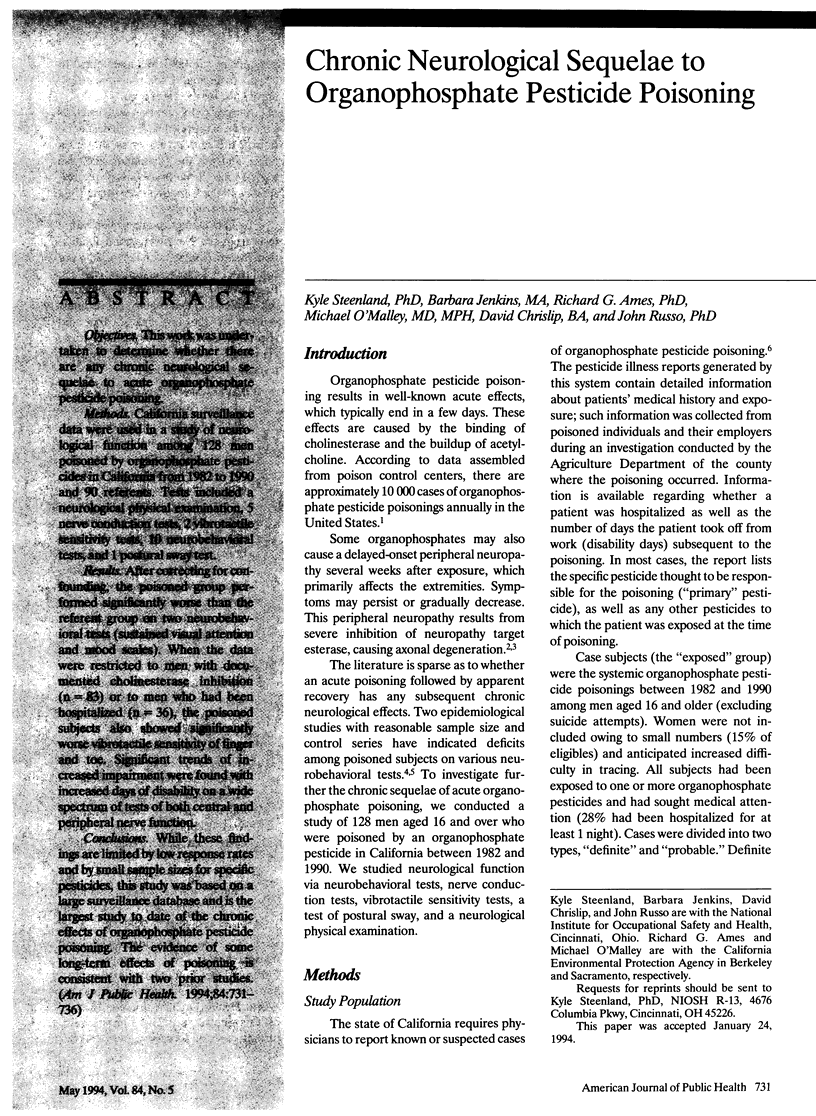
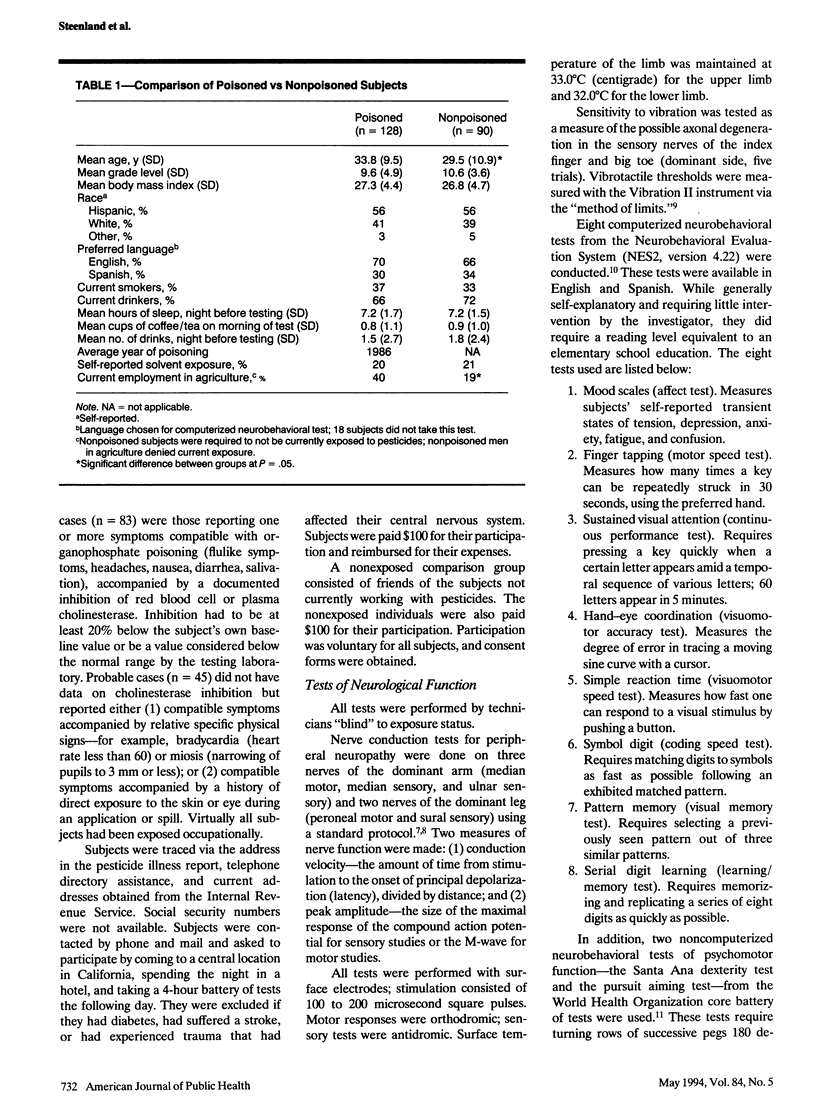
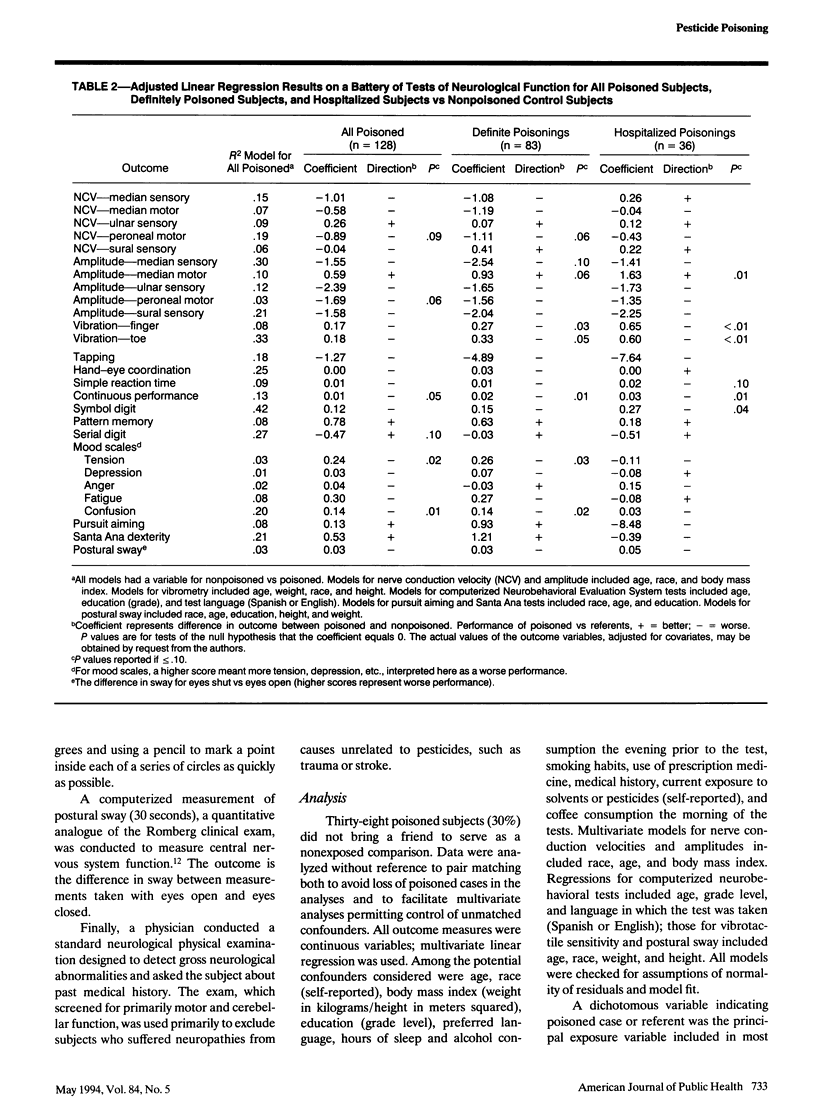
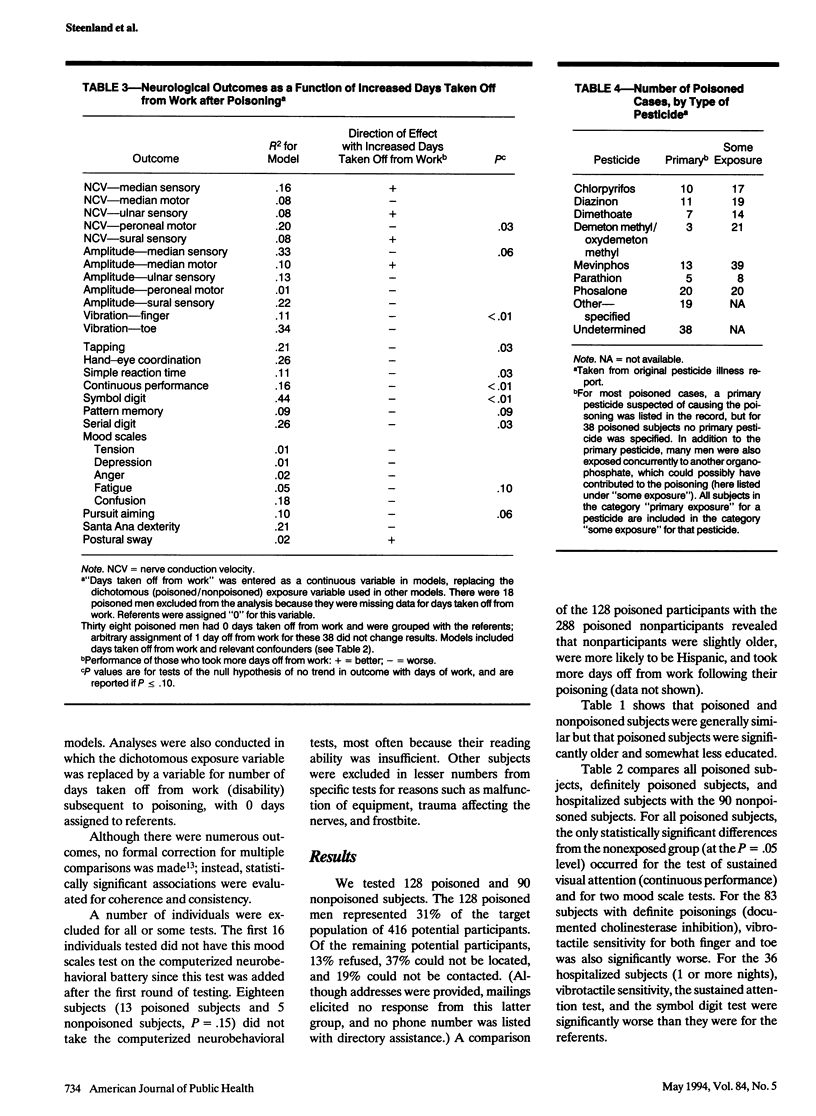
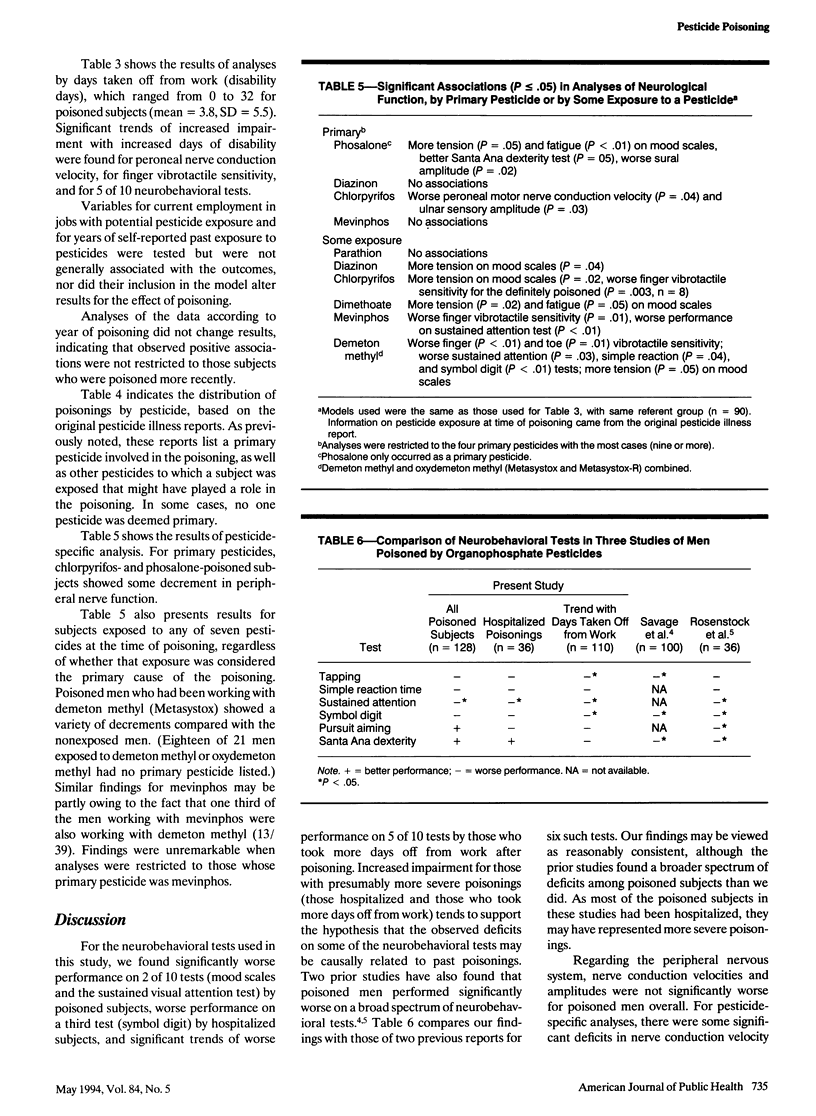
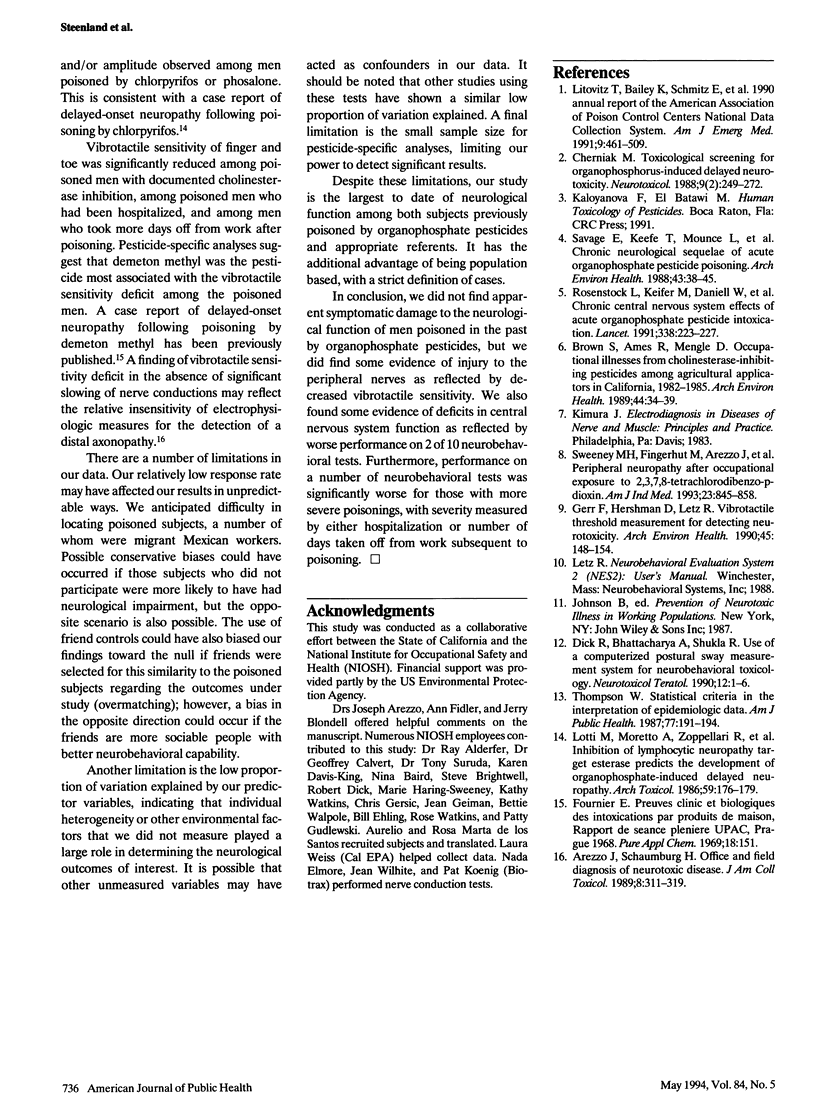
Selected References
These references are in PubMed. This may not be the complete list of references from this article.
- Brown S. K., Ames R. G., Mengle D. C. Occupational illnesses from cholinesterase-inhibiting pesticides among agricultural applicators in California, 1982-1985. Arch Environ Health. 1989 Jan-Feb;44(1):34–39. doi: 10.1080/00039896.1989.9935870. [DOI] [PubMed] [Google Scholar]
- Dick R. B., Bhattacharya A., Shukla R. Use of a computerized postural sway measurement system for neurobehavioral toxicology. Neurotoxicol Teratol. 1990 Jan-Feb;12(1):1–6. doi: 10.1016/0892-0362(90)90105-l. [DOI] [PubMed] [Google Scholar]
- Gerr F., Hershman D., Letz R. Vibrotactile threshold measurement for detecting neurotoxicity: reliability and determination of age- and height-standardized normative values. Arch Environ Health. 1990 May-Jun;45(3):148–154. doi: 10.1080/00039896.1990.9936708. [DOI] [PubMed] [Google Scholar]
- Litovitz T. L., Bailey K. M., Schmitz B. F., Holm K. C., Klein-Schwartz W. 1990 annual report of the American Association of Poison Control Centers National Data Collection System. Am J Emerg Med. 1991 Sep;9(5):461–509. doi: 10.1016/0735-6757(91)90216-7. [DOI] [PubMed] [Google Scholar]
- Lotti M., Moretto A., Zoppellari R., Dainese R., Rizzuto N., Barusco G. Inhibition of lymphocytic neuropathy target esterase predicts the development of organophosphate-induced delayed polyneuropathy. Arch Toxicol. 1986 Oct;59(3):176–179. doi: 10.1007/BF00316329. [DOI] [PubMed] [Google Scholar]
- Rosenstock L., Keifer M., Daniell W. E., McConnell R., Claypoole K. Chronic central nervous system effects of acute organophosphate pesticide intoxication. The Pesticide Health Effects Study Group. Lancet. 1991 Jul 27;338(8761):223–227. doi: 10.1016/0140-6736(91)90356-t. [DOI] [PubMed] [Google Scholar]
- Savage E. P., Keefe T. J., Mounce L. M., Heaton R. K., Lewis J. A., Burcar P. J. Chronic neurological sequelae of acute organophosphate pesticide poisoning. Arch Environ Health. 1988 Jan-Feb;43(1):38–45. doi: 10.1080/00039896.1988.9934372. [DOI] [PubMed] [Google Scholar]
- Sweeney M. H., Fingerhut M. A., Arezzo J. C., Hornung R. W., Connally L. B. Peripheral neuropathy after occupational exposure to 2,3,7,8-tetrachlorodibenzo-p-dioxin (TCDD). Am J Ind Med. 1993 Jun;23(6):845–858. doi: 10.1002/ajim.4700230603. [DOI] [PubMed] [Google Scholar]
- Thompson W. D. Statistical criteria in the interpretation of epidemiologic data. Am J Public Health. 1987 Feb;77(2):191–194. doi: 10.2105/ajph.77.2.191. [DOI] [PMC free article] [PubMed] [Google Scholar]


